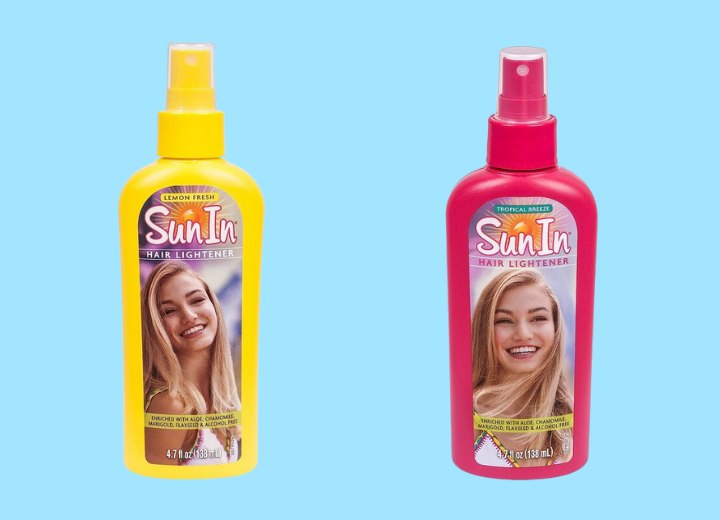Sun-In and Hair Coloring

Q: Can I color my hair after using Sun-In for several years?
A: The short answer is yes, you can color your hair after using Sun-In, but there are important factors to consider. It's possible to apply hair color after using the Sun-In lightening product, though it is recommend to wait at least four weeks after your last Sun-In application before using any chemical hair color on your hair.
Before you commit to coloring your entire head, always perform a strand test first. This crucial step involves applying the hair color to a small, hidden section of your hair to see how it reacts. Given that Sun-In has been working on your hair for years, your strands may have varying levels of lightness and porosity throughout, which means the color might take differently in different areas. A strand test will give you a preview of the final result and help you avoid any unwanted surprises.
It's essential to understand that Sun-In is fundamentally a hair lightening product, even though it's marketed as a way to achieve natural-looking highlights. The lightening effects are permanent, meaning that any areas where Sun-In has lifted your natural pigment will remain lighter until new hair grows in. This permanent alteration can affect how new hair color appears and adheres to your hair.
One of the most significant considerations when transitioning from Sun-In to hair color is the increased porosity that lightening creates. When hair becomes more porous, it can absorb color more quickly and intensely than virgin hair, but it can also release color more rapidly, leading to faster fading. Additionally, porous hair is more susceptible to damage from chemical processes, heat styling, and environmental factors.
To minimize potential damage and achieve the best results, consider having your hair professionally assessed before coloring. A professional can evaluate your hair's condition, porosity levels, and the existing lightness from Sun-In use. They can then recommend the most appropriate color formula and processing time for your specific situation. Professional colorists also have access to products that can help fill in overly porous areas before color application, ensuring more even results.
If you decide to color your hair at home, invest in high-quality products and follow the instructions meticulously. Look for hair colors specifically formulated for previously lightened hair, as these often contain conditioning agents that help protect already-compromised strands. Consider using a color with a lower volume developer to be gentler on your hair, even if it means the color process takes longer.
After coloring your hair, you'll need to permanently retire your Sun-In bottle. Sun-In’s lightening agents can cause unpredictable reactions with artificial hair color. These reactions might include uneven color removal or unwanted color shifts.
©Hairfinder.com
See also:
Highlighting and highlights
What are the negative effects of highlighting on your hair?